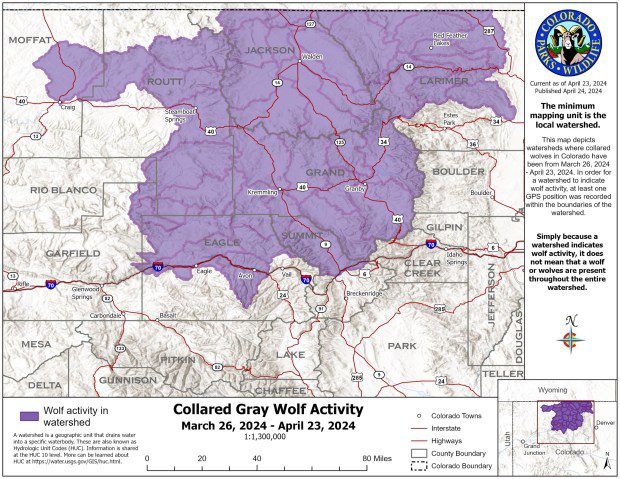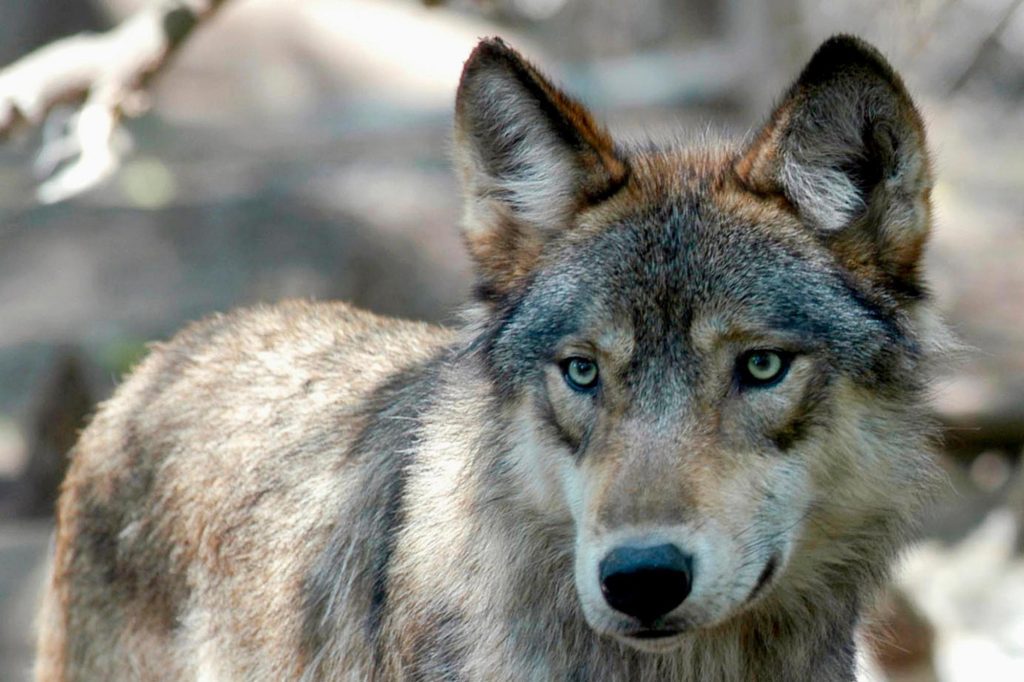Colorado’s gray wolves extended their territory in northern Colorado in April, going farther into streams in Moffat, Routt and Larimer counties, according to state wildlife officials who reported on Wednesday. state wildlife officials said on Wednesday that Collars on two of the 10 wolves released by Colorado Parks and Wildlife in December stopped working..
but those two wolves are still alive and traveling with other wolves with functioning collars, state officials said in a news release on Wednesday. One of the collared wolves was discovered dead in Larimer County last week due to apparent natural causes. Colorado Parks and Wildlife released a map showing collared wolf activity detected by watershed in the mountains between March 26, 2024, and April 23, 2024, to display where the wolves were wandering.
Colorado Parks and Wildlife provided an updated map indicating wolf activity from March 26 through Tuesday in watersheds from the Wyoming border to south of Avon and west of Craig in Moffat County to Larimer County west of Fort Collins. The wolves’ territory increased into Arapaho and Roosevelt national forests east of Granby; northwest of Craig and Steamboat Springs into Moffat and Routt counties; and east into Larimer County, as per the new map showing wolf activity. According to the new map, wolf activity continued in Eagle, Summit, Grand and Jackson counties, and the wolves did not wander as far into west Rio Blanco County as they did on the March map.

The collars record a GPS position every four hours and send the data once four locations are recorded. State biologists do not disclose specific locations to protect the wolves and may “buffer” maps to protect wolves at certain times of year, such as mating season. Map accuracy will decrease over time due to other wolves coming in from other states, collar loss and wolf reproduction, state wildlife officials mentioned on Wednesday. They aim to keep at least two collared wolves in each pack.
State officials also started tracking domestic animals killed by wolves, including four cattle and two calves killed in April.
Get more Colorado news by signing up for our daily Your Morning Dozen email newsletter. Colorado’s gray wolves expanded their range in northern Colorado in April, traveling further into watersheds in Moffat, Routt and Larimer counties, state wildlife officials reported Wednesday., though the wolves did not roam as far into west Rio Blanco County as they appeared to on the March map.
While the map shows watershed boundaries where wolves have been located, it doesn’t mean wolves are in those areas now or that they traveled throughout the entire watershed, CPW officials said.
The collars record a GPS position every four hours and send the data to state biologists once four locations are recorded. State officials do not share specific locations to protect the wolves and may “buffer” maps to protect wolves during certain times of year, such as mating season.
Map accuracy will drop over time because of other wolves immigrating from other states, collar loss and wolf reproduction, state wildlife officials said Wednesday. State biologists are aiming to keep at least two collared wolves in each pack.
State officials also launched a new page tracking domestic animals killed by wolves, including four cattle and two calves killed in April.
Get more Colorado news by signing up for our daily Your Morning Dozen email newsletter.



